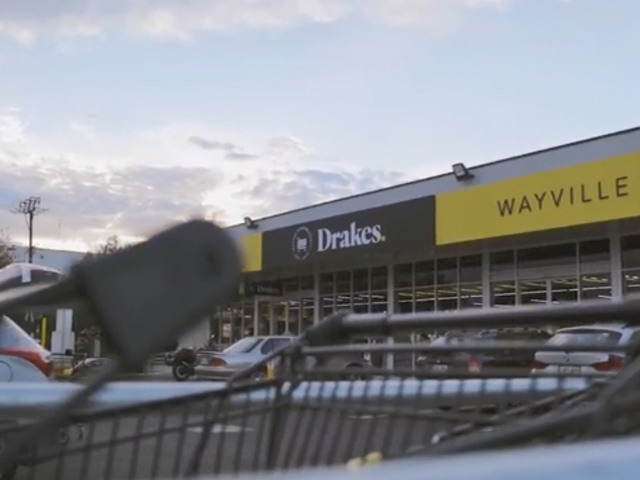Article content
How Drakes Supermarkets revamped its 50-store IT system and network with new tech to be more efficient, resilient and easier to manage.
For businesses with a number of locations, the quality and design of the network connections between those branches have become a key competitive differentiator. Reliable, efficient bandwidth is increasingly a requirement for good in-store customer experience. In addition, it’s never been more important for the data collected on location to be centralised back to head office in real time.
Five years ago, when Drakes Supermarkets began imagining how their IT systems and network could better support their business’ needs, they identified four key areas which needed improvement:
1. Network resiliency
2. In-store IT systems resilience
3. Centralised IT management
4. Simplification and efficiency.
“Telstra has had a long relationship with the Drakes,” explains Ross Chiswell, Telstra’s Enterprise ICT, Hybrid Platforms Solutions Lead.
“But the real catalyst behind was them asking, ‘How can I have centralised access to technology that’s very important to my business?’ and ‘How can I use that technology to strengthen the ICT systems to support the business?’”
The resulting technology and network elements leveraged centralised management for IT and data, combined with efficient network traffic management and a robust system of local, private cloud and public cloud-based systems to minimise the impact of any business interruption across the business’ 50 supermarkets, in SA and QLD.
Bringing everything together
One of the enterprise ICT solution’s most important aspects is its centralised IT management – each of Drakes’ 50+ stores is now managed virtually out of head office via a collection of technologies curated by Telstra.
The benefits of this are twofold. With a supermarket ICT team consisting of just three people, nobody has to travel to remote store locations to set up the tech – once the appliance has been shipped, all you have to do is connect it to a power outlet and a network cable, which also dramatically lowers provisioning time.
This allows Drakes Supermarkets’ small ICT team to effectively manage their geographically dispersed branches. In addition to rapid initial deployment, this also allows the team to deal with any IT issues which might appear without making the trip out to their remote locations.

Resilient by design
Each store contains a Riverbed SteelFusion appliance, which holds a virtual copy of the store’s IT system that is actually operating on private cloud infrastructure as a service using Cisco, NetApp and VMware products based out of Drake’s data centre in Adelaide.
“Just imagine 50 little virtual images of each supermarket around the country,” Chiswell said.
“What that enables Drakes to do is that if one store was disconnected from the network, the SteelFusion box in the store continues to operate as a stand-alone, and then when the connection is restored it can sync back up again with the central image, and align both sets of data.”
If, for any reason, the terrestrial connection of any of the properties is broken, the store will automatically cut over to Telstra’s NextG environment. That was the first thing we did to increase resilience, Chiswell explained.
“Drakes needed to implement a solution that would locally run the point-of-sale equipment. So if all of the network just disappeared, that device would keep the store running.
This resilience means that if something were to affect the networks, business can continue as usual. During the 2016 South Australian power outage, where the entire state lost power for a few days, Drakes stores were able keep trading because each location still had operational IT systems and a connected data network to allow point of sale and e-payment transactions to be processed.
In some South Australian towns, Drakes was the only supermarket or store still trading.
Protect your valuable data
In addition to the resilience provided via each store being able to operate independently of the central image at HQ, the redesigned enterprise ICT system introduced two automatic copies of all data – one in Drakes’ Adelaide DC, and another in Telstra’s public cloud.
“The store exists in two locations virtually now – one on the physical premises and one in the Adelaide DC – so the data is automatically protected.
”Data can be pulled either from a local source or from the central data centre, with both having full copies of the data at any given time. In practice, this means that if one store loses power, the central DC acts as a backup. And it works both ways – if the central DC loses power, each individual store will be able to continue trading using their instance or the data and IT system.
Taking stock of the situation
Under the previous system, each store managed its own data tracking sales and stock levels. Data would have to be sent manually and individually to a central location, which couldn’t be done in real-time, meaning that all of the data had to be reconciled and aligned by the teams at their Adelaide HQ.
In practice, this meant that data that could have been invaluable for decision-making was unable to be utilised at the key moment, because it wasn’t available in real-time.
Having centralised data that is automatically updated from each branch cuts down valuable time and allows a clear picture of how much stock a store has and when it will require more of specific items – meaning that staff at each location and HQ know when and how much to restock.
Paying less for more
Leveraging cutting edge technology and data utilisation algorithms, the IT system and network upgrade also provide cost savings.
“The technology used contains algorithms to get rid of gaps between data packets as well as caching or condensing previously sent information,” Chiswell explained. “It optimises the amount of data that’s going across the network, getting rid of ‘white gaps’ so that there’s more room for more data.”
In practice, this means that you can send more information across the same sized connection, making it a cost-effective solution. It also has the added bonus of being able to handle more data since the bandwidth is being used more efficiently – “allowing important services that can’t be compressed like voice and video to have priority access to the available bandwidth”.
“Not only have we improved base resilience, we’ve also achieved cost efficiency by optimising the bandwidth at the same time,” Chiswell said.

